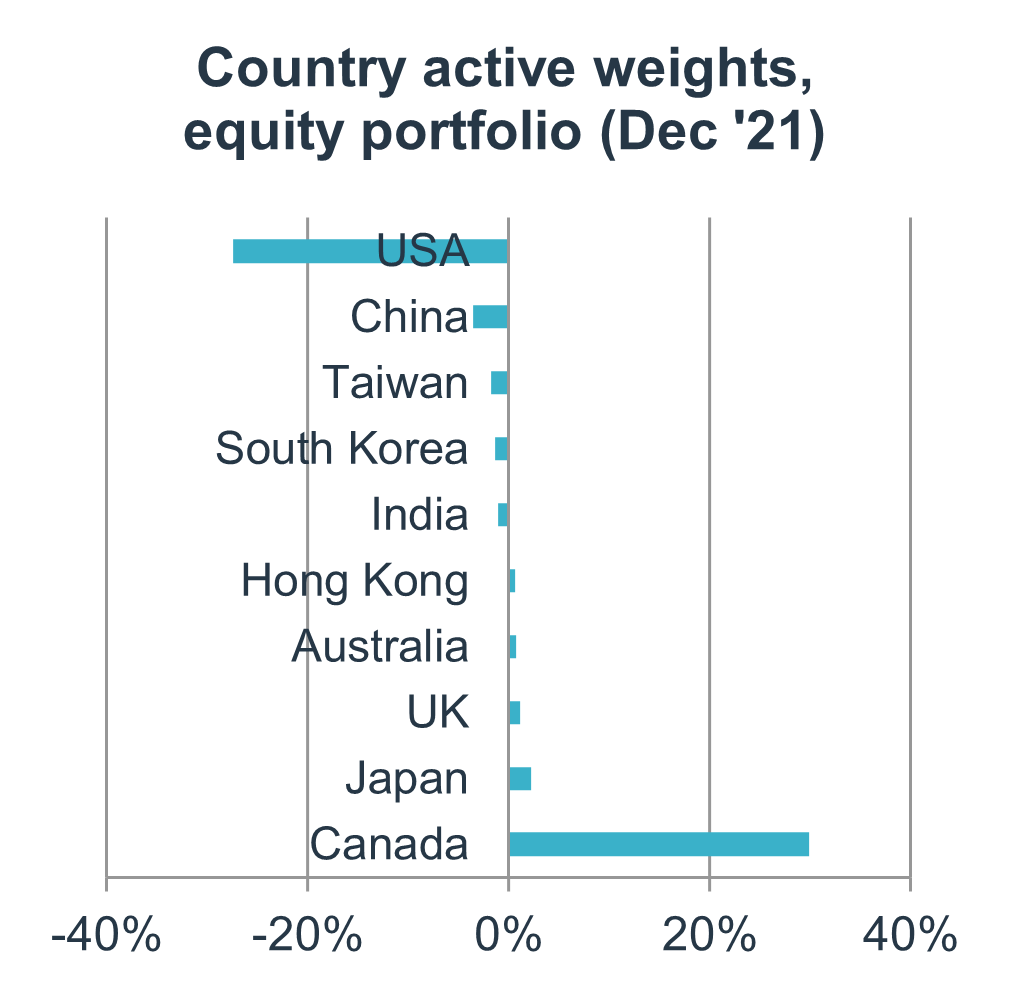- Canadian Pension Fund, Equities
- Q1 2022
- Equities, Global
- >CAD 10 billion
- United States
- Evaluate equity exposures and reposition
- Strategic Portfolio Design
Our client says:
Rethinking ‘first principles’ for a portfolio is not a straightforward task, especially when it is a mature portfolio with existing biases and manager relationships already in place. The overall exposures of a portfolio that has evolved through time may or may not be intentional and can be hard to change in practice.

Client-Specific Concerns
This pension plan was seeking to re-evaluate their equity portfolio and engaged bfinance after their retained consultant was unable to provide appropriate support. bfinance had previously aided this client with an ad hoc manager selection project (US Value ESG).
The investor suspected that the current portfolio was likely to contain unintended exposures to various regions, sectors or styles, in part as a result of the growing number of external asset managers being appointed over the years. They also judged that the mandate sizes were likely to be inefficient from a sizing perspective.
Importantly, the client did not want to be given a ‘solution’: they wanted a consultant that would act as a true extension of their team, enabling them to gain a better understanding of their exposures, develop their own portfolio design principles and implement relevant changes.
Outcome
- Revealing unknown biases: The team used leading third-party software to model and aggregate the underlying exposures for each equity mandate and at total equity portfolio level. This revealed biases and tilts in terms of geographies, sectors and size—some known, but some unknown (or larger than the investor had realised). This included high exposure to more polluting companies. This analysis was important in challenging the status quo and revealing unintentional risk exposures.
- Developing portfolio design principles: Rather than being prescriptive, bfinance supported the team in developing their own principles—covering regional exposure, sectors, ESG/impact and manager diversification. For example, a guiding principle would be to allocate globally and that major intended over- or underweights such as a Canadian home bias or large allocation to China would require a dedicated investment thesis, rather than being a side-effect of manager selection. Researchers also helped the investor to form and articulating their own ‘core beliefs’ around equity investing.
- Test-drive new portfolios: As a culmination of the engagement, the investor produced a series of proposed alternative equity portfolios for bfinance to assess/review. This effectively involved putting the principles that had been developed into practice and leveraging the existing analysis. Key developments included a move to reduce home bias, more robust diversification across both value and growth managers and dedicated exposure to emerging market equities. Overall, the outcome is a leaner, cleaner, more focused portfolio.
- Following-up with overlay implementation: After this Portfolio Design engagement, the investor engaged bfinance’s support in implementing a programme of risk overlays atop the equity portfolio.


 English (Global)
English (Global)  Français (France)
Français (France)  Deutsch (DACH)
Deutsch (DACH)  Italiano (Italia)
Italiano (Italia)  Dutch (Nederlands)
Dutch (Nederlands)  English (United States)
English (United States)  French (Canada)
French (Canada) 
